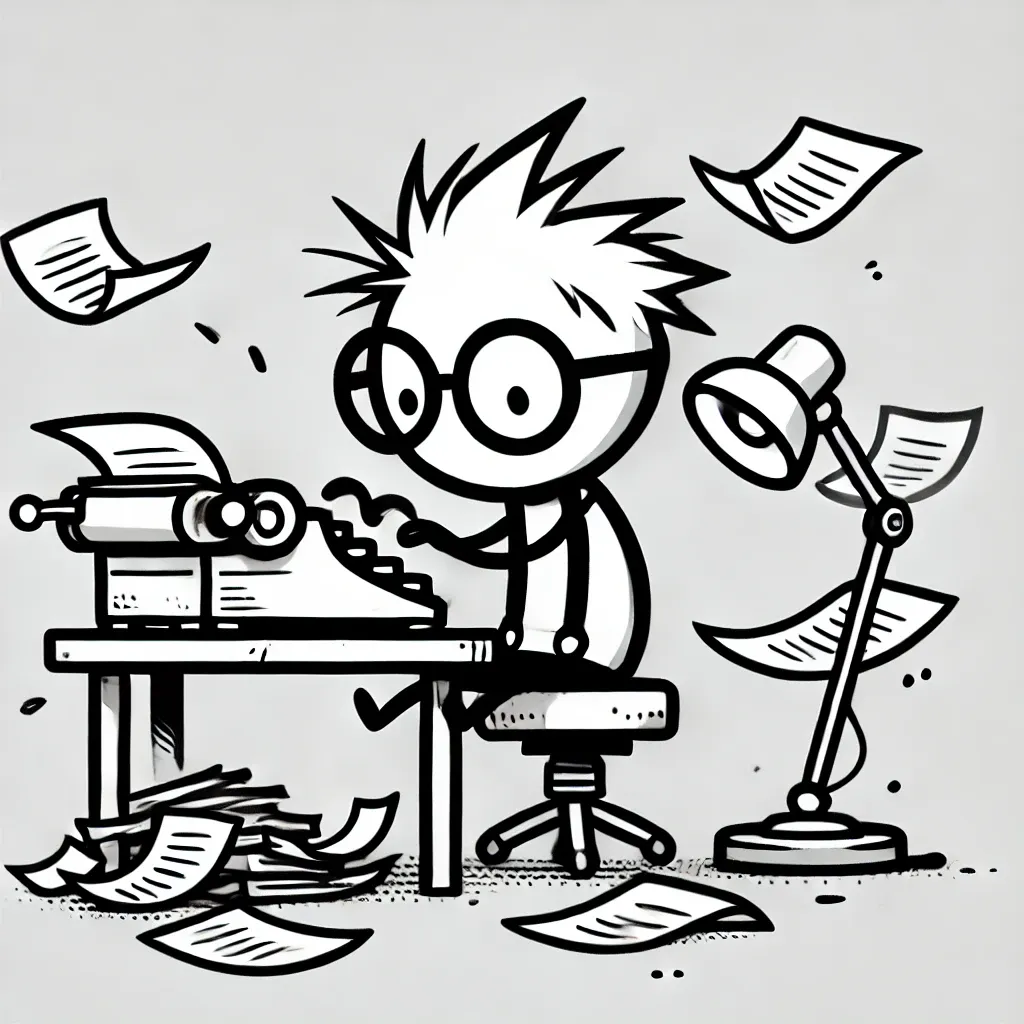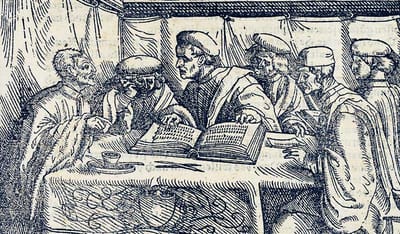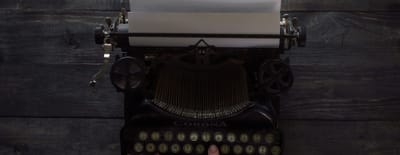
Since well before the current crisis, I have been concerned by how little understanding there is among many faculty regarding academic freedom, first amendment rights (free speech), their limits, and the distinction between them. As with all things legal (or, in the case of academic freedom, quasi-legal), things can get complicated as we drill down into specific examples, both hypothetical and those grounded in case law. But for most faculty and most scenarios, the definitions can be reduced to easy to grasp and easy to share basics. I am going to focus first on the definitions and distinctions as they apply to a professor in a public institution. There are some important differences when it comes to faculty working at private institutions which need to be addressed separately.
Here in Ohio, the governor recently signed an omnibus bill called SB1 which imposes a range of new restrictions and requirements on public universities in the state. While there is very much I objected to in the bill, now that it is law my attention turns entirely to policy and implementation. It will take every minute of the 90 days we have to get in compliance to get it all sorted, and I will write more about all that is involved later. For now, the most important thing I am thinking about is how to reassure faculty and graduate instructors that, as chilling as the law might seem (and intend to be) it does not impact the core principles and protections of our academic freedom. And it is here that we must take shelter and vow to protect the castle walls beyond any further encroachment.
Let’s start with the most basic definition of academic freedom:
Academic freedom is the right of an instructor to research and teach the truth as they understand it within their areas of expertise, confident that—so long as they are researching and teaching ethically and responsibly—their right will be protected regardless of pressure from outside or within the institution.
This is remarkable freedom, one worked towards over the course of generations and too often taken for granted today. In what other job is one hired and told: go make and teach knowledge? In what other job are you hired and then asked, not told: “So, what are you choosing to work on next?”
Needless to say, with great freedom comes great responsibilities. If we wish to teach and research without fear, as we must commit ourselves to doing, then we need to be sure we know the guardrails on academic freedom.
Let’s start here with the basics:
Academic freedom in research comes with the responsibility
- to be scrupulously ethical in pursuing research, always acknowledging those who contributed to your thinking and confirming the accuracy of all data and citation.
- to engaged with the scholarly conversations in one’s field and subject one’s work to peer review.
Academic freedom in the classroom comes with the responsibility
- to position one’s ideas in the context of the current consensus in your field, especially when those ideas are in tension with that consensus
- to not use time in class for discussing issues or topics unrelated to the course
- to create an environment of open inquiry in which students are encouraged to question and offer their own ideas, even when they challenge your arguments or those of the consensus in the field
These responsibilities are not new addendums added for the current moment of antagonism towards higher education. They are as old as the concept of academic freedom itself, and if this current crisis in academia affords us an opportunity to reaffirm our commitments to these responsibilities, at least one good thing will have come out of it all. Academic freedom, after all, has always included the academic freedom of the student as much as that of the professor. Historically this has centered on affording students the ability to make choices in their own course of study, but also empowering students with the tools and the space to pursue truth (as nascent “experts”)—which includes room to question class consensus and the claims of the professor.
Academic freedom is not a legal category, and so its protections are always in need of recommitment from all participants in the project of higher education. The courts have for some time now been deeply interested in academic freedom and its messy relationship with first amendment rights, but it has never been explicitly defined in law, nor has its relationship to first amendment protections been clarified. In truth, I do not think that academic freedom and first amendment rights overlap nearly as much as we might feel they should. Academic freedom, after all, is entirely bounded by our professional roles as scholars and teachers. Free speech is everything we say in our capacities as private citizens outside of our professional roles. Academic freedom, in this sense, is closer to a professional code—like the Hippocratic oath—that has been reaffirmed by and within institutions of higher learning and their stakeholders for generations.
As mentioned in the first installment of the discontinuous history of academic freedom, that affirmation developed unevenly out of a model imported from the German research university of the 19th century, arriving at its first formal articulation with the founding of the AAUP. It would however be the AAUP’s 1940 statement that provided the first concrete distillation of the core freedoms and responsibilities.
The 1940 statement’s definition of academic freedom in research is a bit contorted, and informed by concerns relevant to debates at the time but which we today would separate from the core of academic freedom. I want to explore the full version in all its weirdness in the history, but for now we can reduce the 1940 definition to its first clause:
Teachers are entitled to full freedom in research and in the publication of the results.
If that seems particularly terse, it is because academic freedom in research wasn’t the driving concern for the AAUP in the first quarter century of its existence. The cases most likely to come to their Committee A involved teaching or “extra-mural speech and activities.” Research was not at the time the primary job of most professors. There were relatively few venues for publishing scholarly results and before WWII, there was little government funding available. PhDs and PhD granting institutions remained few and far in between in 1940’s American higher education. While the phrase “publish or perish” first appears in reference to academic life in Logan Wilson's The Academic Man: A Study in the Sociology of a Profession (1942), the fact is that it would be another two decades before the majority of professors truly believed their careers depended on constant research productivity.
If the definition of academic freedom is relatively straightforward, then and now, the definition of academic freedom in teaching is and always has been a more complicated formulation. Here is the 1940 definition:
Teachers are entitled to freedom in the classroom in discussing their subject, but they should be careful not to introduce into their teaching controversial matter which has no relation to their subject.
Because I love historical fiction, let’s unpack this via ha couple of hypothetical “case studies” from an imagined 1940s classroom.
Much hinges upon the caution here—especially at this moment. The statement does not warn against “controversial matter” itself. It is instead cautioning against using class time on topics that have no relevance to the course topic of materials.
In the 1940s, when this definition was disseminated, Darwin and evolution remained a controversial topic. While evolution had been taught in most non-religious universities since the late 19th century, one educator at the time estimated that less than half of high school science teachers even broached the subject in their classes. As a result, many undergraduates arriving at our hypothetical 1940s university had never encountered Darwin, and no doubt some were about to hear their professor say things that contradicted some of their most fundamental Sunday school truisms.
And yet, controversial as it might be, this subject was taught in American universities, and it was protected by academic freedom. After all, Darwinism is germane—indeed, central—to a course in evolutionary biology. Even if a student has enrolled in the class unprepared for the challenges this topic will present to his worldview, even if the student’s parents call the dean to complain that their son is being exposed to heretical ideas, the professor can teach without fear, knowing they are protected by academic freedom.
However, a professor in that same 1940s class on evolutionary biology would not be protected by academic freedom if, for example, they dedicated class time to inveighing against Franklin Delano Roosevelt’s campaign for a third term as president. Or to championing Charles Lindbergh’s campaign to keep the U.S. out of World War II, or to celebrating the USSR’s occupation of the Baltic States. A student complaining to the dean or a legislator complaining to the Board about the introduction of any of these “controversial” topics into a class on evolutionary biology would be listened to very seriously indeed.
Indeed, such a complaint could be made even if the irrelevant material was in no ways “controversial.” For example, a professor who expounded for 15 minutes every class on the adorableness of his French bulldog, or on the progress of his kitchen renovations, might also discover that he is the subject of student complaints to the chair or dean. Like the professor expounding in favor of Stalin or against FDR, this professor too might well find themselves under investigation for failing to fulfill academic responsibilities: the responsibility to teach the class they have been assigned to teach.
There are few faculty who would be shocked that any limits can be put on what they talk about in class. However, these are professors we are talking about, and my people can perform complex intellectual pirouettes to argue for the relevance of almost anything they happen to talk about. This academic version of Six Degrees of Kevin Bacon can be impressive, to be sure, but it does not stand up to the crucial evidence that is the syllabus.
The syllabus is a contract. Much of that contract is directed towards the students signing up to take the course, letting them know their responsibilities, attendance and classroom policies, required materials, etc. But it is also a contract for the professor with the class, committing to teach a certain body of knowledge or set of skills, and articulating the learning outcomes towards which the class will be organized. We can safely presume the syllabus sets aside no time for renovation photos or pronouncements on the current presidential campaign, rendering moot any tortured arguments justifying the introduction of these topics. In AAUP’s 1970s annotations to the 1940 statement, this point is emphasized: “The passage serves to underscore the need for teachers to avoid persistently intruding material which has no relation to their subject.”
A professor might point to their expertise to justify bringing in topics extraneous to the course. After all, expertise is a key term in many definitions of academic freedom. Say that our imaginary 1940s professor of evolutionary biology has published on Soviet politics in a peer reviewed journal, making in that essay much the same argument in defense of the Soviet takeover of the Balkans as they made in the evolutionary biology class. That argument having been peer reviewed, we can agree they pass muster with the field. The problem of course is that that particular area of the professor’s expertise has nothing to do with the class they have been assigned to teach. No matter how impressive their credentials or their command of the topic, the germaneness test will find the material outside the bounds of the class if it occupies more than a passing glance. And if it is outside the bound of the class’s purpose, it is also outside of the protections of academic freedom. Because it is taking place in the classroom in the professor’s professional capacity, it is also not protected by the first amendment.
I have spent a lot of time on the responsibility part of “academic freedom and responsibility” because I think it is important to lean in hard at this time to protecting academic freedom while also reminding ourselves of the precise limits of the citadel we are defending. Reading the demands for “intellectual diversity” and “freedom of (conservative) speech” from red state legislators within the framework of academic freedom and responsibility, I find nothing to suggest I need teach or research in any way differently from how I have for 30 years. I have taught and will continue to teach “controversial topics.” I teach a course called “Reimagining Climate Change,” and I will still be teaching it. I teach courses in American literature and popular culture from the 18th century to the 21st, and there is no way to responsibly tell that story without telling the story of racial inequality and discrimination. I will continue to do so. I teach graphic narrative, and so I will continue to teach both Maus, about the mass slaughter of Jews by the Nazis in World War II, and Footnotes in Gaza, about the 1956 massacre of Palestinians in Khan Yunis and in Rafah by Israeli soldiers.
I teach these things not because they are controversial. When relevant to the course I am assigned, I teach about climate change or institutional racism because they are true and because we cannot honestly face our past or our future without thinking through these realities. I ask students to read books or watch movies that address these topics because they are transformative works of art that enable us to see the past and imagine the future anew.
Let me be clear. I teach. I do not preach about climate change, or the history of American racism, or the persecution of Jews, or Palestinians. I have opinions, of course. But I am not in front of a class to share my opinions. I am there to teach them the skills and the history they need to engage with narrative works that will open up new worlds for them. I am there to equip them for their own journey into these texts and to show them different ways they can navigate the peaks and valleys ahead. What they find, where they end up? That is for them to discover.
Friends from other states who know the kinds of films and books I teach have asked if my syllabi will change in response to SB1. The answer is no. They have asked how I will make space for the new “intellectual diversity” requirements that demand I make room for students who want to question the very existence of climate change or the truth of the Holocaust or the Khan Yunis massacre.
I will do what I have been doing for 30 years. I’ll spend more time with climate change in the next installment, but let’s imagine a class on Maus in which one student has come harboring serious doubts as to the truth of the Holocaust. Who knows where this doubt arose: a deeply antisemitic relative? a subreddit devoted to outrageous conspiracy theories? Maybe he simply does not want to believe humanity capable of such monstrosity. My job is not to shame him. My job is to find out from where his questions arise, and then to point him towards the testimony, the scholarship, and the art that will bring this reality into focus. It is my job also to guide the students in the room horrified by the holocaust denier in their midst to engage with this student as a peer and to model for him how we might engage with this darkest chapter in 20th-century history.
In the exceedingly unlikely case that this student doubles down and begin spewing hateful antisemitic slurs? well, then we are done. I will ask the student to leave the classroom, pointing to my syllabus rules governing civil discourse and disallowing hateful speech. If he refuses to leave, I will call security. As I would have done in any of my previous 30 years of teaching.
But, and this is crucial, I have never once had to call security on a student. I have never had a student assault the class with hateful speech. I have had students who were too sleepy or distracted to listen. But I have never had a student who refused to listen or engage when I and his classmates listened and engaged with them.
Have I been lucky? Maybe. Certainly being a man has made my path earlier. Almost all women instructors have told me stories of being challenged and confronted—especially when they were starting out—that made me run cold. But if I have been lucky, I have never gone into class counting on good fortune to spare me from confrontation. My first book was about early American literature and narratives of white nationalism, and so when I was hired to my first job in 1994 I taught about literary history and American racism. I was a very inexperienced teacher, and I made mistakes. My students were patient with me and I learned from my mistakes, with their help.
I learned quickly that there are really only two ways in which students turn from you or against you when teaching challenging topics. One is if you “preach” as if the answers were fixed, eternal, ordained from on high, leaving no room for doubt. The other is if you teach with fear, as if you distrust the students to be capable and worthy partners in the work at hand. The student respond to both as signs of disrespect: for their intellectual and ethical autonomy, and for their intellectual and ethnical maturity. And they are right to do so.
There is always room for doubt, for nuance, for questions that might or might not lead to consensus. There are truths that must be acknowledged as such, but they are fewer in number than we often like to pretend. And there is nothing to fear in teaching instead of preaching. Our students are in every way ready to sit down for these conversations, and they are eager to have someone set up the table and invite them to engage. I owe it to my students to be fearless. I owe it to the remarkable job I have been privileged to have for over three decades. And I owe it to the academic freedom which has made this job and the institution which employs me possible. Academic freedom is the red line we must never surrender, because without it this remarkable enterprise ceases to exist—or, more terrifying, it is coopted in the name of a very different kind of “education.”
In the next installment I will return to the concept of “expertise,” central to any definition of academic freedom and in existential peril at this moment. Academic freedom can be eroded through intrusion of state or institution. But it can also be destroyed through the erosion of the very idea of expertise itself. And that erosion is well underway.
Subscribe (free!) to receive the latest updates




Member discussion